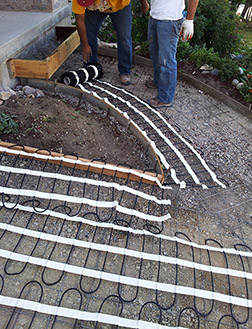Efficient, Discreet Radiant Heat
Radiant heat has been around many years now for very good reasons. Electric underfloor heating is just plain hard to beat when it comes to ways of providing efficient heat for your home or business. I’m sure you have heard of heated floor technology by now. Rows of heat cable, mats or other heating elements are laid out on the subfloor and the finish surface is applied over that. ComfortTile floor heating cable is a proven, and commonly chosen radiant heat system that is easy to install, and has become the workhorse of radiant heating systems. ComfortTile systems offer a single point connection, allowing you to connect one end to the thermostat and be done. No need to “loop” or connect the other end to a controller.
FoilHeat and FloorHeat are also excellent choices when there is need to keep the profile extremely low. Both floor heating systems are almost paper thin, and the low profile also makes FloorHeat idea for discreet roof heating systems (aka, RoofHeat STEP). Both FoilHeat and FloorHeat systems come in rolls that are conveniently rolled out for easy installation. Virtually any finish surface can be applied over the top. The FloorHeat system is also a low-voltage, self-regulating floor heating system.
One of the nice features of a radiant heated floor system is that you program or control zones separately, so you can shut down any rooms that you aren’t using. There is not a more comfortable and energy-efficient heat solution than an electric radiant floor heating system. It’s simply a heat that can’t be beat.

